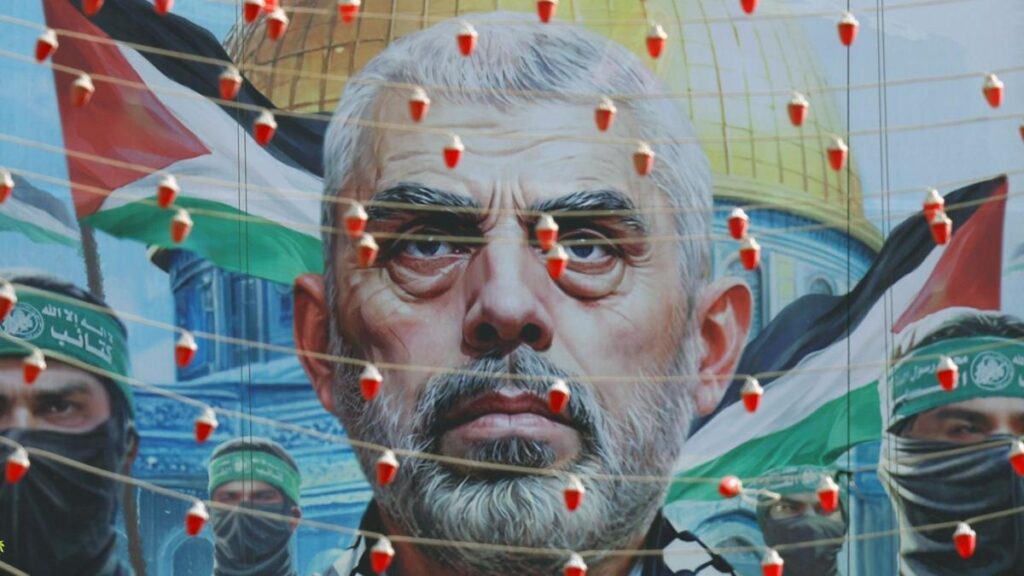The recent killing of Yahya Sinwar, the leader of Hamas, has prompted urgent discussions within the organization regarding his successor. Two officials disclosed to the BBC that deliberations are set to commence soon, with Khalil al-Hayya, Sinwar’s deputy and the senior official for Hamas outside of Gaza, being considered among the leading candidates. Currently based in Qatar, al-Hayya is at the forefront of ongoing ceasefire negotiations between Hamas and Israel, bringing a wealth of knowledge and strategic insight regarding the Gaza situation. This leadership transition comes in the wake of significant turmoil within the organization, including the earlier assassination of former leader Ismail Haniyeh, and highlights the pressure Hamas faces in maintaining cohesion amidst internal and external pressures.
Sinwar’s recent death is noteworthy, given his pivotal role in orchestrating the attacks on October 7. His leadership was seen as a signal of resistance against Israel, reflecting a bold stance in the ongoing conflict. Since July, negotiations for a ceasefire have been largely hindered, and many view Sinwar’s influence as a major barrier to achieving a resolution. In the aftermath of his assassination, senior officials from Hamas reaffirmed their unchanged demands concerning any potential ceasefire. These include a total withdrawal of Israeli forces from Gaza, cessation of hostilities, unhindered humanitarian assistance, and reconstruction efforts for the devastated region, all of which Israel has firmly rejected.
Israeli Prime Minister Benjamin Netanyahu’s appeal for Hamas to relinquish its arms and surrender has been met with staunch resistance from Hamas officials. They have categorically stated that surrender is not an option, emphasizing their commitment to the struggle for their people’s freedom. This determination reflects the enduring resolve of Hamas as they reject any notion of capitulation, insisting that they will continue the fight until their objectives are met. Sinwar, known for his resolute leadership, embodied this spirit, and his assassination has left a significant vacuum that Hamas must now navigate.
Despite the immense loss of leadership that Sinwar’s death represents, Hamas has historically demonstrated resilience in replacing its leaders. Since the 1990s, the organization has experienced numerous leadership changes due to targeted assassinations and other pressures. While Israel has effectively eliminated many prominent figures within Hamas, the group has managed to sustain its operational effectiveness through the emergence of new leaders. As discussions of succession begin, there remains a degree of uncertainty surrounding the continuity of Hamas’s objectives and strategies moving forward.
In the context of this leadership transition, the fate of Israeli hostages held in Gaza presents an additional layer of complexity. With the ongoing conflicts further escalating, concerns about the safety and protection of these hostages become increasingly pressing. Amidst increasing tensions, Mohammed Sinwar, Yahya Sinwar’s brother, has surfaced as a crucial figure and potential leader of the remaining armed factions of Hamas in Gaza. His role could be influential in directing the group’s strategies and responses during this turbulent time, impacting the dynamics of both hostages and military operations.
As the war in Gaza rages on, the situation remains dire. Recent military actions by Israeli troops have intensified, resulting in substantial casualties, particularly in areas like the Jabalia refugee camp, which have been targeted under claims of Hamas regrouping efforts. The combination of shifting leadership within Hamas, unresolved ceasefire negotiations, the fate of hostages, and the local humanitarian crisis paints a complex picture of the ongoing conflict. As Hamas grapples with its next steps, the implications of these developments will not only redefine the organization but also fundamentally shape the future landscape of the Israeli-Palestinian conflict.

